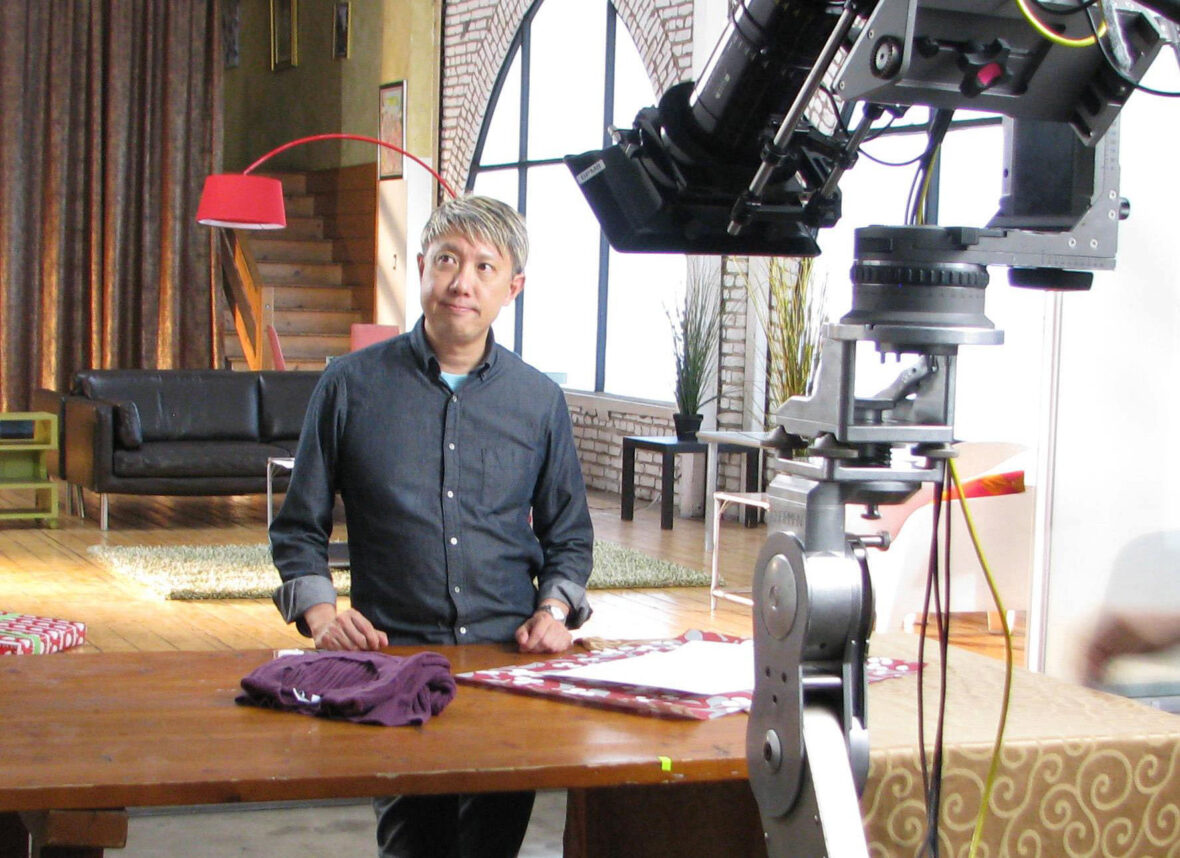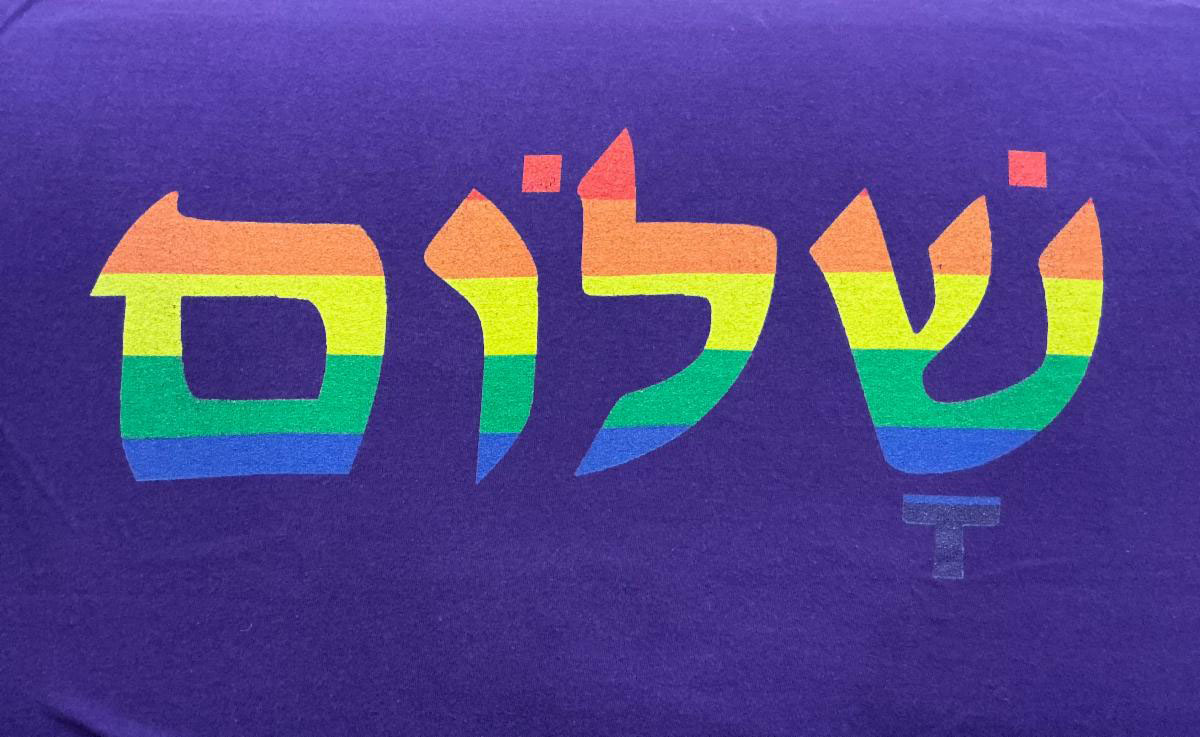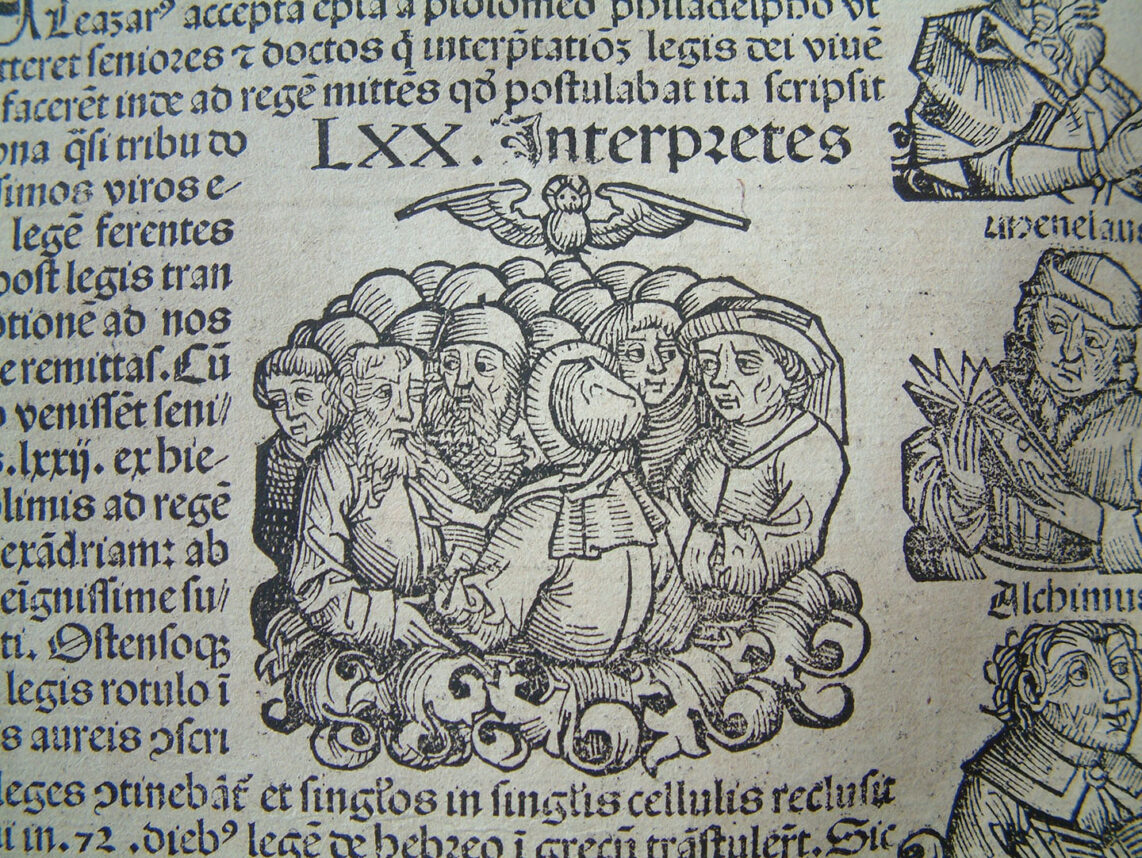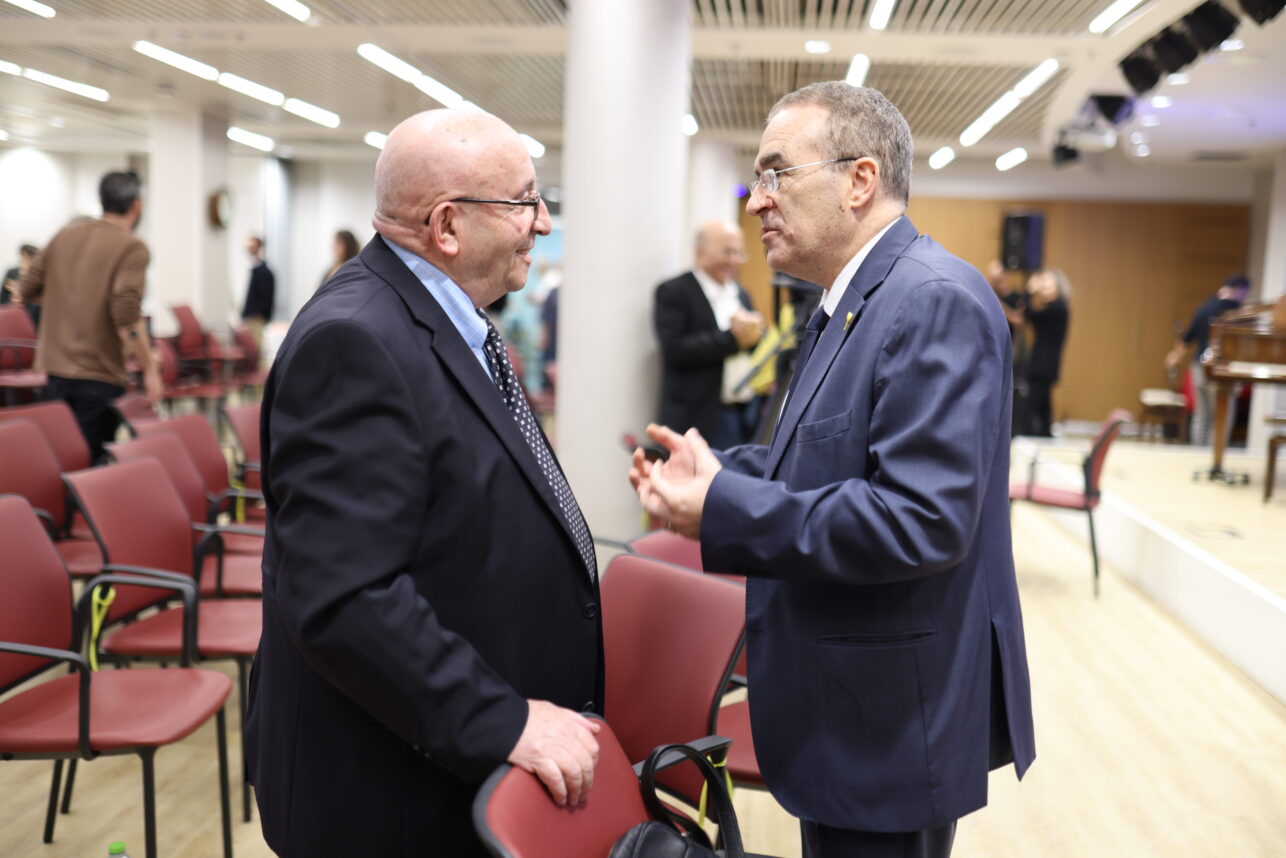
It should come as no surprise that, while sitting in a local café, about to take in the final chapter of a book that includes mysticism, folklore, fantasy, and a story about a rabbi who creates a golem, and a lady at the next table says to me, “That looks like an interesting book,” I invite her to join me, we discover we have the same first name, and she tells me she is a painter who has painted … the golem. What are the chances?
Jonathan Kellerman called “The Hidden Saint” by Mark Levenson, “An ingenious, compelling mix of horror, fantasy, suspense and Jewish mysticism. Think Tolkien, albeit benefiting from a yeshiva education.”
Levenson is, indeed, an Orthodox Jew. I’ve read fictionalized books by Jews, about Jews or Judaism, that have disappointed. This isn’t one of those.
Levenson gives some of his sources – and motivation — in an Afterword, and others in a Zoom interview I did with him during chol hamoed (the intermediate days of Passover). One can also read his thoughts on this and other issues on his website: marklevensonbooks.com.
The stories about Rabbi Adam, on whom the story is based, took place in the Middle Ages, but [Levenson] moved him up to the 18th century, and spins a tale of ardent love, fear, ingenuity and adventure.
The stories about Rabbi Adam, on whom the story is based, took place in the Middle Ages, he told me, but he moved him up to the 18th century, and spins a tale of ardent love, fear, ingenuity and adventure.
The Story
Adam, a young man living in the village of Miropol in pogrom-ridden Europe, disappears from his wedding to his beloved childhood sweetheart, Rachel, when he runs back to retrieve the ring that has been left at home. His parents fear that if he goes alone, he won’t be under the protection of anyone from the evil spirits, a reference to the custom of not leaving a bride or groom alone on their wedding day – a practice that is still observed today, and an example of how Levenson weaves past and current traditions into the narrative.
Adam never returns.
We see Adam years later, in a less than loving marriage (from his side) with the righteous and devoted Sarah. He is the rabbi now of their town of Lizensk, and they are about to marry off their son Hersh. Rabbi Adam has no memory of his childhood and his youth, including fleeing his wedding.
After the wedding ceremony, Hersh and Miriam are about to partake in a festive meal, in Hersh’s bedroom, as they have been fasting. But the bride is suddenly possessed by an evil spirit, turns into a monstrous creature, attacks her groom, and when she comes out of it, they both collapse on the bed in a stupor in which they linger between life and death.
Rabbi Adam fears that there is something in his past that has led to this horrific situation. His son Mendel has also been abducted — apparently by an evil spirit — and Mendel’s twin sister, Leah, while looking for her doll in another room, was lured and then attacked by the same demon spirit, so she, too, has fallen into a deep stupor.
Rabbi Adam sets out to find his son. He believes that finding him will also cure the newlyweds and his daughter.
What ensues is a story in which he creates a seven-foot golem out of mud, who hereafter thinks of Rabbi Adam as “the creator” to help him fight the evil spirits, that include, first and foremost, the evil Lilith. We hear the thoughts of Adam, the Golem and Sarah in the course of the book.
During his travels, Adam encounters a widowed inn-keeper, Shayna, who eventually reveals herself to be a “Lamed Vavnik” — one of the 36 tzadikim without whom the world could not continue to exist. If something happens to her, who will take her place?
Their adventures take them through forests and over rivers, occasionally having to struggle or fight with evil spirits, including the Yedoni. Levenson credits Rav Nathan Slifkin with introducing him to these creatures, who appear in his book, “Sacred Monsters: Mysterious and Mythical Creatures of Scripture, Talmud and Midrash.” They are warned against in Parshat Kedoshim (for the first time in Vayikra 19:31).
The story includes not just danger, death, monsters, and a constant teetering between fear and fearlessness, but a great deal of introspection on the part of Rabbi Adam, and a seeking to regain his lost memory in order to strive toward teshuva, that he believes will help him find his son and overcome the evil spirits that have abducted him, which he believes will also lead to the healing of his son, daughter and daughter-in-law.
The frightening events are tempered by a healthy dose of tongue-in-cheek humor: “It struck him how little he knew about women, and what he knew about his mother was hardly of use.”
The frightening events are tempered by a healthy dose of tongue-in-cheek humor:
“It struck him how little he knew about women, and what he knew about his mother was hardly of use.”
They reach a village and a woman sneers when she sees the golem, telling her son that no, it’s not a goblin, because goblins are better dressed.
Before his quest begins, Adam finds a book in his synagogue that gives him clues, and a black box with a mirror inside. “I need to seek the Lamed Vavnik and the mirror is showing me where to go,” he says to his wife, Sarah. When I asked Levenson if he was influenced by the magic mirror in “Beauty and the Beast,” he said, “Rabbi Adam is an actual Jewish folklore hero. He began to appear in the 16th century, early 17th century, and I moved him up a couple of centuries. In the original stories of Rabbi Adam he is said to have a magic mirror.” Indeed, a short search reveals that the Rabbi Adam stories preceded the original versions of Beauty and the Beast.
One is tempted to ask, like children, “Did these stories ’really happen’?”
“One is free to imagine that it was a real person or that it was made up,” says Levenson. “I don’t like calling it fantasy because it implies that it’s not true … Some rabbanim will say that everything in the gemara really happened and some of the aggada is meant to teach moral ideas. People believe different ways. The aggadata in the Talmud was a big influence on me, more than kabbalistic texts … the first golem stories are in the Talmud. There are wonderful ‘ghost stories’ in Masechet Brachot and one of them inspired the scene in the cemetery.
“I wanted it to work for general readers as well. You don’t have to come in with any particular knowledge; it’s an adventure story.”
Wise truisms are slipped in unobtrusively. Shayna is touched when the golem presents her with a bouquet of wildflowers. “Family, I suppose,” she says, “is sometimes where you find it.”
They reach Adam’s home village of Miropol, but it has been destroyed. Adam thinks that it’s all over. “’Over?’ [Shayna] said with a long shake of her head. ‘Not that. Never that. There is always a way. And it’s our job to find it.’”
While there, Rabbi Adam meets spirits in a cemetery, in a world of Sisyphean limbo, including his Uncle Itzik and the Widow Baile, who lament to him that their tasks are never completed. The sewing always returns to the Widow Baile the next morning as it was before. Uncle Itzik continues to bake his pastries “but my sack of flour never empties, and my baked goods go forever uneaten…How can we leave this world behind us for the World to Come when there is no one left to remember us?” Adam says the Kaddish prayer, and the spirits fade away, conveying to us the importance of memory.
While seeking his beloved Rachel, Adam wonders, how could it be that “the woman with whom for twenty years he’d lived, slept, and had children, was a woman he was never meant even to know? That the angels had decreed otherwise forty days before he’d been born.” It is a metaphysical question about fate vs. choice.
How did this venture begin?
“I was interested in fantasy from a very early age [and] my Jewish identity was always important,” says Levenson. He is an award-winning dramatist, screenwriter, and short story writer, as well as a longtime journalist for both Jewish and general publications.
In 1986 he wrote a golem play that was produced. “I’ve always had that sense of Jewish folklore so the journey began with that early golem play and in the years after that I wrote an adaptation of S. Ansky’s “The Dybbuk” for actors and puppets, an adult show… it toured nationally.”
“The Hidden Saint” was originally conceived as a screenplay. It was runner-up in the Bruce Geller screenwriting competition hosted by the American Jewish University in Los Angeles. “The writing itself took nine years and then bringing it to publication, was another three. There were long periods when I got stumped and had to put it aside and come back to it.” He also had to break out of the original screenplay outline, which was limiting. “And the novel is so much stronger than the original screenplay.
Levenson says the golem’s role, “Was not to be a Frankenstein monster or to supersede God but to better know God … the kabbalists created golems so they could draw closer to God, by being creators, but because they’re not God, their creation is less, by not having the power to speak.”
As to the source of the Rabbi Adam story, Levenson refers me to the book of Howard Schwartz, an award-winning author, anthology editor and English professor, who writes in “Elijah’s Violin, and Other Jewish Tales”: “Rabbi Adam is perhaps best known for his role as the transmitter of the fabled Book of Mysteries to the Baal Shem Tov in Hasidic legend, but there also exist several independent medieval tales … In each case Rabbi Adam comes to the assistance of his fellow Jews either by interceding with an evil king or by directly aiding a Jew in danger … The tales about Rabbi Adam also served as models for some of the legends of Rabbi Judah Loew of Prague, the creator of the Golem.
Will there be a sequel?
“Yes, I’m researching a sequel now; it will take Rabbi Adam into some very different territory but I need to do more research and it’s a more complicated thought structure than the quest structure.”
I wondered if he had teachers or rabbis who were his inspiration.
“I had none among my teachers. I had was my mother, Jeanne Levenson, who absolutely inspired me. She had worked as a trade reporter before she was married and after repeated rejections, she stopped writing, but she had that in her blood and she certainly passed it on to me — a love of literature, books, theater — so I’m glad she did live long enough to see it written.”
Has there been any pushback from the Orthodox community? Levenson is a member of Young Israel of White Plains.
“I’ve received no negative responses. My wife and I were married by a Chabad Rabbi, Yakov Saacks. I asked him to read the book and he supplied a blurb; he loved it and he was certainly looking from an Orthodox perspective.”
On his website, Levenson writes, “Why does evil exist in the world? It’s a question that has occupied thinkers such as Maimonides throughout the ages. Evil exists to give man the ability to choose good. Evil exists for man to value life. For these reasons, the Almighty created a world with death and disease, war, wild beasts — and the evil at the center of The Hidden Saint.”
At one point, when Adam is finally in a place to confront Lilith, he says, “You have no power over me because I give you no power over me.” For this message alone, this book is a worthy read.
The next time you see your teenager, or student, engrossed in an 800-page secular fantasy tome, you can tell him, “Have I got a book for you…”
“The Hidden Saint” is available on Amazon and Barnes and Noble and from May 24th will also be available as an audio book
Toby Klein Greenwald is an award-winning journalist, theatre director and the editor-in-chief of WholeFamily.com.























 More news and opinions than at a Shabbat dinner, right in your inbox.
More news and opinions than at a Shabbat dinner, right in your inbox.